The person who, at the time was really the face of Arcanis in the Denver area was Kitty Curtis. I met Kitty at my first Bencon where she wore those kitty ears – which I always thought funny. At the time, she was the RPG Coordinator.
Then LG was killed and I started to look for something else (Pathfinder was still a long way away) and so I showed up at one of the Thursday nights in Arcanis on a dark November evening. Yadda yadda yadda; I was hooked! Kitty and her crew (Gregg, Ryan, Calvin and many others) kept feeding me my monthly dose of 3.5… We kept playing until we finally called it quits this past September. A number of reasons are involved (which is not the goal of this post).
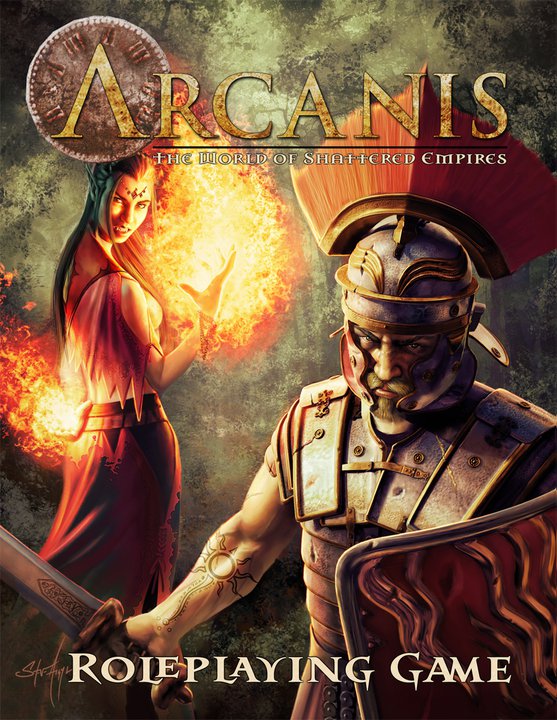 JP: Hi Kitty and thank you again for participating in this interview.
JP: Hi Kitty and thank you again for participating in this interview.
KC: You're welcome JP! Always glad to do an interview that doesn't involve me on camera.
JP: I had a long chat with Peter from PCI about the new Arcanis system [link]. I wanted to do this interview with you is to focus on the organized play aspect of the new Arcanis system, not so much the system (cursed be ye d12).
KC: Just a note - I personally don't like using a d12 to track what tick you act on next. A decent d12 doesn't have the numbers next to each other, which makes it really awkward. Pen and paper works great for me, and there are a few different versions of the Action Dial running around, although my favorite is to use one of those little clocks that teach grade school kids how to tell time. (The hour hand can even be used to track strain/recovery.) I'm loving the GM Master Clock I have - I'll show you next game.
JP: If you allow me, can we talk a little about the old Living Arcanis (LA)?
KC: Sure!
JP: Can you give us a history of LA?
KC: The old Living Arcanis had a couple of different phases. We started with the 3.0 OGL, and the main difference between Living Arcanis (LA) and Living Greyhawk (LG) was that there were no regions. Sure, there were different geographical areas that events took place in, but every adventure was available to every player without having to travel in the real world.
Then Wizards of the Coast (WotC) upgraded to 3.5 LA held on to 3.0 for quite a while - Paradigm Concepts Inc (PCI) had put out new crunch products and wanted to continue to let players use them without having to pay for an "upgrade". The existing Campaign Staff started to get a little bogged down, and sought to share the wealth, so they introduced the Invisible Kings program. Groups of players and writers were invited to apply. We were to choose a region or secret society and flesh it out, and provide 1-2 years’ worth of outlines for adventures. To take the load off of campaign staff, each group of 3 or more also edited and play-tested our own adventures before sending them to another group for review, and then to campaign staff. In addition, as the campaign ramped up towards its grand finale of high-level play, the Invisible Kings were tasked with continuing to provide adventures for low-level play so that new players would still have adventures available to them, as well as having more localized plot lines for new players to wrap their heads around while learning about this amazing setting.
JP: Then 4e came along…
KC: Then WotC officially announced that 4e was forthcoming. The new 3.5 supplements were once again made obsolete, and it was clear that PCI needed their own rules set if they wanted to be in control of their campaign. Now, I was initially in the camp of not wanting to learn *another* rules system, but I have to tell you, once I started experimenting with the new system, I saw just how much of the old rules system was dedicated to squeezing Arcanis into d20 rules. (At the end of the last arc, our rules document was 79 pages. 79 pages! In the new campaign, we argued for a week whether we *really* wanted to move from 7 pages to 8 pages, including the cover page.)
JP: What other elements did Living Arcanis introduce that were unique to it? I assume those are still in “Chronicles”…
KC: There are two things that I first saw in LA (and haven't seen in any other campaigns, but then again, I don't play them all). One was separating adventures into what we call Hard Points and Soft Points. Hard Points are essentially the core storyline of each arc, and we recommend they be played in order if at all possible. Soft Points are adventures that take place around the central storyline, and we try to label whether the events in that adventure take place after any other adventures. The first story line was a 6-year arc (which stretched across 10 years of real time), so it was really important for players to be able to see whether a particular adventure would make a good "pick-up" game, or whether they would be lost without back story.
JP: [Interrupting] I really like the Hard/Soft point system. So much so that we are introducing something similar in NeoExodus, a campaign setting I am working on… But continue.
KC: The second was the introduction of secret societies – organizations that characters could be a member of - and they might have additional information or goals that the rest of the party didn't have. Sometimes this was just to give the society an item that ended up in party treasure at the end, sometimes it would be a side mission, and occasionally it would put one or more characters in conflict with the rest of the group, which led to some really rich role-playing. They were a "love them or hate them" element, but those that loved them were devoted, and the campaign really played to that. A fair number of players joined a particular legion in the campaign, so they started to get more and more mention at the major events (Roleplaying Interactives and Battle Interactives). There's a large contingent that still has the very snazzy shirts they had made. (Hat tip to Legio Lex!)
JP: Can you give us your RPG-Pedigree?
KC: Well, I don't know that anyone really needs to care who I am, but if you want my gamer history: There are plenty out there that will always see me as a baby gamer. I was kept out of the boys' D&D games in high school, no matter how much I wanted in. Shortly after high school (1999-ish), a friend heard I was interested in playing and put me in touch with a group. We started with AD&D, (darned "rouge" skills!).
After a year or two of playing, when we started to lose players to attrition (in our case, marriage to non-gamers), a friend mentioned Living Greyhawk. A way to get more D&D time AND a way for shy awkward me to actually meet people I had something in common with? Score! I stayed up and read the 3.0 rulebook from page 1 through to spells and attended my first public game day (October Rebellion, in Valhalla's back room, where I met many of my close friends.)
Two weeks later I coordinated my first game day and two months after that I judged my first game. I picked a doozy Fright at Tristor, for those that know it. I was hooked. Over the next two years I judged 2-4 adventures a week, and when I worked the night shift, ran some midnight madness games to get more gaming in. I was furious when they got rid of the points system for GMs less than a week before my Paragon status would have kicked in. I started editing for LG (local, then core and ADPs), and considered Triad, but just couldn't fit it into my life. I started helping at conventions and running more game days.
Meanwhile a friend had been trying to pitch a new setting at me: Arcanis. I kicked and screamed and fought. I didn't have time to learn a new setting, I was too busy coordinating. Then he hit me where it hurt - he told me he needed me to fill a seat at a slot 0 (allowing judges to play an adventure before they run it), or the table wouldn't go off. So I put together a dummy character and decided I would just warm the seat outside of combats. That's where I made my fatal mistake – I listened to the plot, and it was all downhill from there. He loaned me his rule book and I devoured it that night. I judged Arcanis at the first convention in Denver during the first year of the campaign, then coordinated gamedays and the local mailing list, eventually became an Invisible King (or Queen, as the case may be), then Assistant Campaign Director, and now Campaign Director.
JP: Yep… The setting in Arcanis is why we play it… What other games have you played?
KC: As far as my laundry list of games I've played, there's AD&D, d20 3.0 (variety of genres), 3.5 (variety of genres), a little 4.0, ShadowRun, Tales from the Floating Vagabond, The Window, Big Eyes Small Mouth, Vampire, GURPS, Primetime Adventures, Deadlands, Spycraft, a little RoleMaster and of course a couple of complete homebrews from when our groups got cocky and decided we'd make our own from scratch. I'll play just about anything so long as I have a pre-generated character and time, although I particularly want to try out Dread, Grimm, A Faery's Tale, Monsters and Other Childish Things, Savage Worlds, Veggie Patch, Pathfinder, Dogs in the Vineyard, Changeling and Spirit of the Century. I know I left some off of both lists. If I haven't tried, it, I'm game, once I have the free time. :D Oh, and board games, and video games when I had the time. But no CCGs or battle miniatures-I don't have the cash, much less the time.
More with Kitty next week.













 The Reis Confederacy occupies the northern parts of Exodus, an area frequently called by its original name, the Wyldlands of Bal. Its lands are covered in sweltering jungles whose northern border vanished into thick permanent fog that swallows men’s souls. The land is overrun by feral tribes of Caliban and Enuka. Massive monsters roam and threaten its inhabitants.
The Reis Confederacy occupies the northern parts of Exodus, an area frequently called by its original name, the Wyldlands of Bal. Its lands are covered in sweltering jungles whose northern border vanished into thick permanent fog that swallows men’s souls. The land is overrun by feral tribes of Caliban and Enuka. Massive monsters roam and threaten its inhabitants.





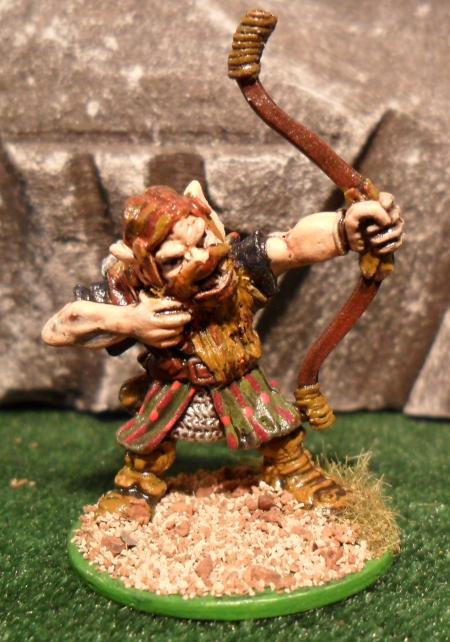

 Since Stan makes sure to let us know that he is not working as a developer but someone who "shepherds the creation process". This seems to me like they have a number of half-formed or incomplete projects they want to hammer out, complete and get off the plate. He can direct and expand projects that have been lying around for a while. This would allow WotC to have a number of products "almost ready" they could release over a time period while they put their designers and developers' brain to work on what we all know is coming sooner rather than later... This would allow WotC to have a revenue stream while they work through the chinks of their next big thing.
Since Stan makes sure to let us know that he is not working as a developer but someone who "shepherds the creation process". This seems to me like they have a number of half-formed or incomplete projects they want to hammer out, complete and get off the plate. He can direct and expand projects that have been lying around for a while. This would allow WotC to have a number of products "almost ready" they could release over a time period while they put their designers and developers' brain to work on what we all know is coming sooner rather than later... This would allow WotC to have a revenue stream while they work through the chinks of their next big thing.
 Perhaps one of the most complex and unique society in all of Exodus is the one nation that really is not one… Let me explain. The Janus Horde is not a nation that is the result of a series of invasions, long wars or epic struggle for independence.
Perhaps one of the most complex and unique society in all of Exodus is the one nation that really is not one… Let me explain. The Janus Horde is not a nation that is the result of a series of invasions, long wars or epic struggle for independence.

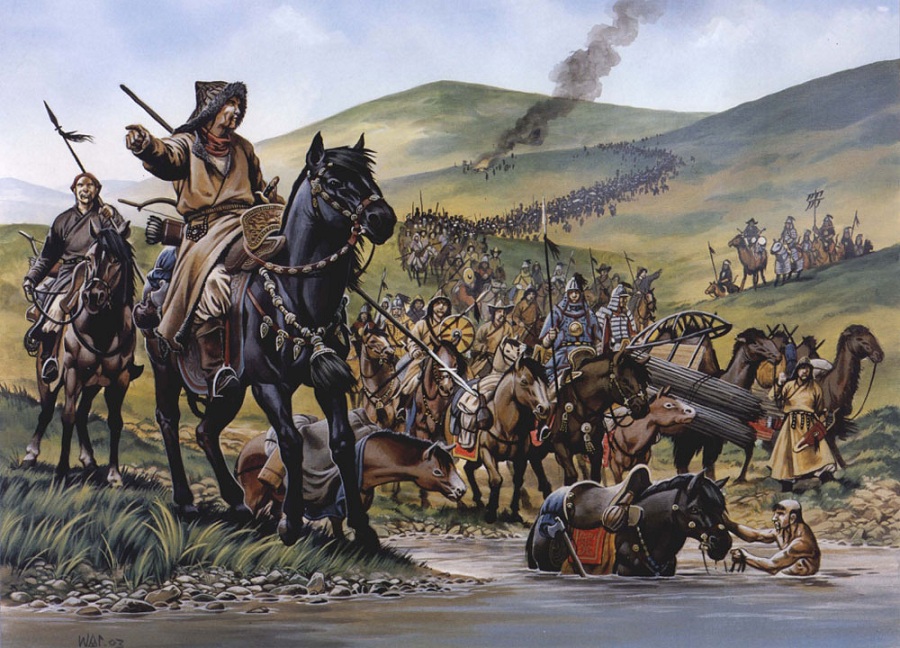
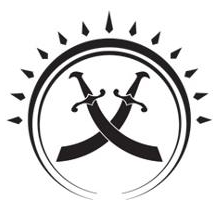 Easily the oldest of the states of Exodus is without doubt the Dominion. Forged in the aftermath of the War of Mind and Magic, the Dominion’s human population intermarried with gevet and foreign colonists from the lands of the Sorcerer-Kings of Abaddon to create a distinct sub-race. The Dominion was formed ten centuries ago when the First Khagan – whose name is unknown to this day – led his people in rebellion against the crumbling empire of the Sorcerer-Kings in a series of surprise raids that showed his military genius. At his death, he left the Dominion with its own alphabet, a clear caste system, a strong military tradition and a people who valued and encouraged their own innate magical talents.
Easily the oldest of the states of Exodus is without doubt the Dominion. Forged in the aftermath of the War of Mind and Magic, the Dominion’s human population intermarried with gevet and foreign colonists from the lands of the Sorcerer-Kings of Abaddon to create a distinct sub-race. The Dominion was formed ten centuries ago when the First Khagan – whose name is unknown to this day – led his people in rebellion against the crumbling empire of the Sorcerer-Kings in a series of surprise raids that showed his military genius. At his death, he left the Dominion with its own alphabet, a clear caste system, a strong military tradition and a people who valued and encouraged their own innate magical talents.
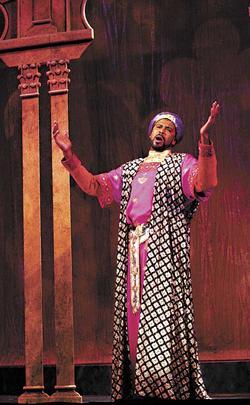 The current Khagan is Malick Al’Adim. He is a renowned scholar, swordsman and magic wielder. Malick is loved by his subjects as a fair, an even-tempered and patient man. However, since the death of Empress Mercy, he has grown increasingly paranoid and has begun re-arming the Dominion for war. People blame the Khagan’s erratic behavior on the pressure of running such a country.
The current Khagan is Malick Al’Adim. He is a renowned scholar, swordsman and magic wielder. Malick is loved by his subjects as a fair, an even-tempered and patient man. However, since the death of Empress Mercy, he has grown increasingly paranoid and has begun re-arming the Dominion for war. People blame the Khagan’s erratic behavior on the pressure of running such a country.
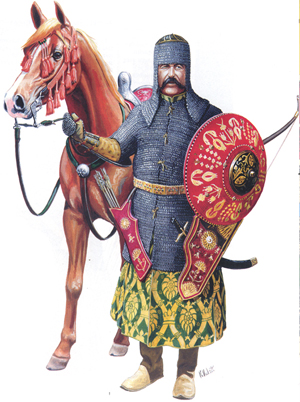 People of the Dominion have dark skin, dark hair and dark-colored eyes. However, on the northern borders, straw and sandy hair is not uncommon. Skin tones lighten near the Caneus Empire and the Arman Protectorate. The intermingling of the Cordelian stock (the Dominion's major human group) with its neighbors over the centuries was caused by constant invasions and warfare. Mixed in with this – and especially closer to the borders, the dress codes changes and introduces foreign elements to the traditional elements.
People of the Dominion have dark skin, dark hair and dark-colored eyes. However, on the northern borders, straw and sandy hair is not uncommon. Skin tones lighten near the Caneus Empire and the Arman Protectorate. The intermingling of the Cordelian stock (the Dominion's major human group) with its neighbors over the centuries was caused by constant invasions and warfare. Mixed in with this – and especially closer to the borders, the dress codes changes and introduces foreign elements to the traditional elements.
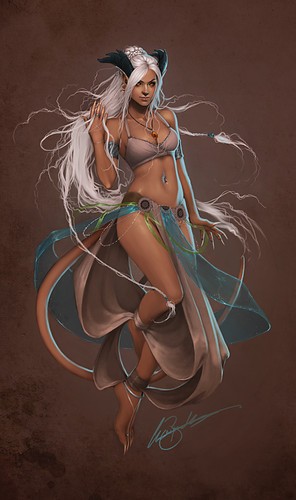 The Dominion has the biggest population of gevet (or tieflings) in all of Exodus. Unwelcomed in most part of the world, these part-fiends part-humans have heavily influenced Dominion society. Their influence in the arts (particularly music and dance) is undeniable. Few Khans resist taking a gevet concubine whose promiscuity and libido are legendary. The trick is to woo one and get her away from her family. Gevet are extremely protective of their females and matrons rule entire tribes with an iron fist.
The Dominion has the biggest population of gevet (or tieflings) in all of Exodus. Unwelcomed in most part of the world, these part-fiends part-humans have heavily influenced Dominion society. Their influence in the arts (particularly music and dance) is undeniable. Few Khans resist taking a gevet concubine whose promiscuity and libido are legendary. The trick is to woo one and get her away from her family. Gevet are extremely protective of their females and matrons rule entire tribes with an iron fist.
 The Dominion army is overall based on the old tribal system. Khans gather to form an army. The core of the army is made up of light cavalry and designed for rapid movement. Its numbers are actually quite small as the Dominion wins its battle through the use of magic. To supplement that, the Dominion employs specialist units, such as Sasori infantry, heavy cavalry fighting (from the the northern Dominion) and gevet assassins. Fighting the Dominion means one should be ready to fight a number of summoned elementals.
The Dominion army is overall based on the old tribal system. Khans gather to form an army. The core of the army is made up of light cavalry and designed for rapid movement. Its numbers are actually quite small as the Dominion wins its battle through the use of magic. To supplement that, the Dominion employs specialist units, such as Sasori infantry, heavy cavalry fighting (from the the northern Dominion) and gevet assassins. Fighting the Dominion means one should be ready to fight a number of summoned elementals.
 Born from the ashes of the Cavian empire, the Caneus Empire went from a lawless land where petty warlord fought each other for scraps of lands to a feudal society. The Kaga’s hand in the establishment of such a system is unclear, however it is recorded in the ancient chronicles that the Kaga provide some warlords knowledge that led to the establishment of the Empire.
Born from the ashes of the Cavian empire, the Caneus Empire went from a lawless land where petty warlord fought each other for scraps of lands to a feudal society. The Kaga’s hand in the establishment of such a system is unclear, however it is recorded in the ancient chronicles that the Kaga provide some warlords knowledge that led to the establishment of the Empire.
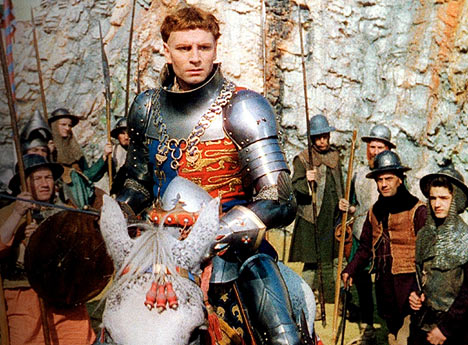
 The Empire has a long tradition of militarism. Every noble is expected to provide military service at the call of the Empress. There is a fair amount of competition in doing so and few nobles would refuse to serve if called upon, their honor demands it.Younger nobles, both male and female proudly serve the empire. As they grow older and have obligations to their lands and people many leave imperial service to retire to their lands. Many still have fond memories of service and frequently regale others with war stories by the fire.
The Empire has a long tradition of militarism. Every noble is expected to provide military service at the call of the Empress. There is a fair amount of competition in doing so and few nobles would refuse to serve if called upon, their honor demands it.Younger nobles, both male and female proudly serve the empire. As they grow older and have obligations to their lands and people many leave imperial service to retire to their lands. Many still have fond memories of service and frequently regale others with war stories by the fire.



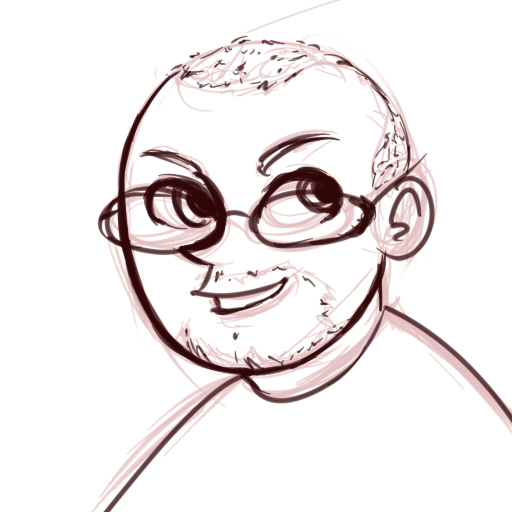
 Last post as the Avatar, completed the tour of the new races found in the NeoExodus book. If you missed any part of it, you can find
Last post as the Avatar, completed the tour of the new races found in the NeoExodus book. If you missed any part of it, you can find 
 Like the Gevet, the Kalisans are a new race that arrives with the Setting Book. Like with the gevet, Louis and I talked a lot about this race and its potential inclusion. In the end, they were just too cool to leave out. Here’s why…
Like the Gevet, the Kalisans are a new race that arrives with the Setting Book. Like with the gevet, Louis and I talked a lot about this race and its potential inclusion. In the end, they were just too cool to leave out. Here’s why…
 The Prymidian are a race of red-skinned humanoids that have a supernatural mastery of language. Whether this ability is based in some innate magical ability OR in some form of minor psionic power is not clear. What is clear is that prymidians are able to speak with most intelligent creatures they encounter.
The Prymidian are a race of red-skinned humanoids that have a supernatural mastery of language. Whether this ability is based in some innate magical ability OR in some form of minor psionic power is not clear. What is clear is that prymidians are able to speak with most intelligent creatures they encounter.
 I have to admit that the first time I saw the P’Tan, I rolled my eyes and went *groan* another catfolk race. But after I began to look at them a little deeper, I began to see there was more than meets the eye. They are not “just” catfolk, but they have a history that makes them unique and abilities that truly take them to a whole other level.
I have to admit that the first time I saw the P’Tan, I rolled my eyes and went *groan* another catfolk race. But after I began to look at them a little deeper, I began to see there was more than meets the eye. They are not “just” catfolk, but they have a history that makes them unique and abilities that truly take them to a whole other level.
 Sasori are a races of humanoid with scorpion features. Sasori occupy a niche that is very unique in all of Exodus… Though demand for other resources such as money, weapons, and influence wax and wane, the only resources in constant, ravenous demand is information. Sasoris are information peddlers, passing information back and forth through an unseen web. This makes them very powerful. Because of that power, other races both fear and need the Sasori.
Sasori are a races of humanoid with scorpion features. Sasori occupy a niche that is very unique in all of Exodus… Though demand for other resources such as money, weapons, and influence wax and wane, the only resources in constant, ravenous demand is information. Sasoris are information peddlers, passing information back and forth through an unseen web. This makes them very powerful. Because of that power, other races both fear and need the Sasori.

 JP: Hi Kitty and thank you again for participating in this interview.
JP: Hi Kitty and thank you again for participating in this interview.


 The Cavians are a race of psionic rat-men. After the fall of the First Ones, they rose to prominence in what is not frigid Nas. The Cavian race opted to explore the field of the mind and create what is now a hive mind. The goals of the Hive Mind are nebulous and unclear to most, creating fear and mistrust. This led to the War of Mind and Magic where the Sorcerer-Kings of Abaddon and the Cavians clashed in the biggest conflict since the defeat of the first ones. In defeat, the cavian retreated to parts unknown. Where they disappeared to is the topic of hot debate. About six decades ago, the Cavians returned to Exodus. They have since spread throughout Exodus where many see them with mistrust.
The Cavians are a race of psionic rat-men. After the fall of the First Ones, they rose to prominence in what is not frigid Nas. The Cavian race opted to explore the field of the mind and create what is now a hive mind. The goals of the Hive Mind are nebulous and unclear to most, creating fear and mistrust. This led to the War of Mind and Magic where the Sorcerer-Kings of Abaddon and the Cavians clashed in the biggest conflict since the defeat of the first ones. In defeat, the cavian retreated to parts unknown. Where they disappeared to is the topic of hot debate. About six decades ago, the Cavians returned to Exodus. They have since spread throughout Exodus where many see them with mistrust.
 The Cyneans are a race of crystalline humanoids with a strong fascination with all things arcane. They are eager seekers of knowledge and arcane mysteries. They are stoic and calm. Cyneans hail from the non-Alliance island of Gavea but have migrated throughout southern Exodus.
The Cyneans are a race of crystalline humanoids with a strong fascination with all things arcane. They are eager seekers of knowledge and arcane mysteries. They are stoic and calm. Cyneans hail from the non-Alliance island of Gavea but have migrated throughout southern Exodus.
 The Dalrean are plant humanoids, drawing from both heritage. They live in patches in the thickest and most remote forests of Exodus. Theirs is an extremely complex social structure that is incomprehensible to other races. Each patch is a nation in itself. Some dalreans sometimes leave their patch to travel the world, a concept they have difficulty explaining to others. Another unique feature about them is that they do not actually speak, sending spores that allow them to communicate with other life forms.
The Dalrean are plant humanoids, drawing from both heritage. They live in patches in the thickest and most remote forests of Exodus. Theirs is an extremely complex social structure that is incomprehensible to other races. Each patch is a nation in itself. Some dalreans sometimes leave their patch to travel the world, a concept they have difficulty explaining to others. Another unique feature about them is that they do not actually speak, sending spores that allow them to communicate with other life forms.
 The Enuka are big, loud and powerful. Hailing from the jungles of northern Exodus, an enuka sees the world in terms of predator and prey. They seek to be the apex predator at all times. Enuka appearances vary wildly from one to the next due to the many mutations common to the race. Enukas themselves consider these mutations natural and do not have any prejudices. Some mutations develop later in an enuka’s life.
The Enuka are big, loud and powerful. Hailing from the jungles of northern Exodus, an enuka sees the world in terms of predator and prey. They seek to be the apex predator at all times. Enuka appearances vary wildly from one to the next due to the many mutations common to the race. Enukas themselves consider these mutations natural and do not have any prejudices. Some mutations develop later in an enuka’s life.
 The gevet are a race that were excluded from the original “Races of NeoExodus” book for a number of reasons. After reviewing them, I gave them a partial re-do from the original 3.5 document and added them to the campaign book. They really add another dimension to the world. You know when sometimes you are missing something you don’t know you are missing? The gevet are that race. The more I read and thought about them, the more I could see the adding to NeoExodus.
The gevet are a race that were excluded from the original “Races of NeoExodus” book for a number of reasons. After reviewing them, I gave them a partial re-do from the original 3.5 document and added them to the campaign book. They really add another dimension to the world. You know when sometimes you are missing something you don’t know you are missing? The gevet are that race. The more I read and thought about them, the more I could see the adding to NeoExodus.